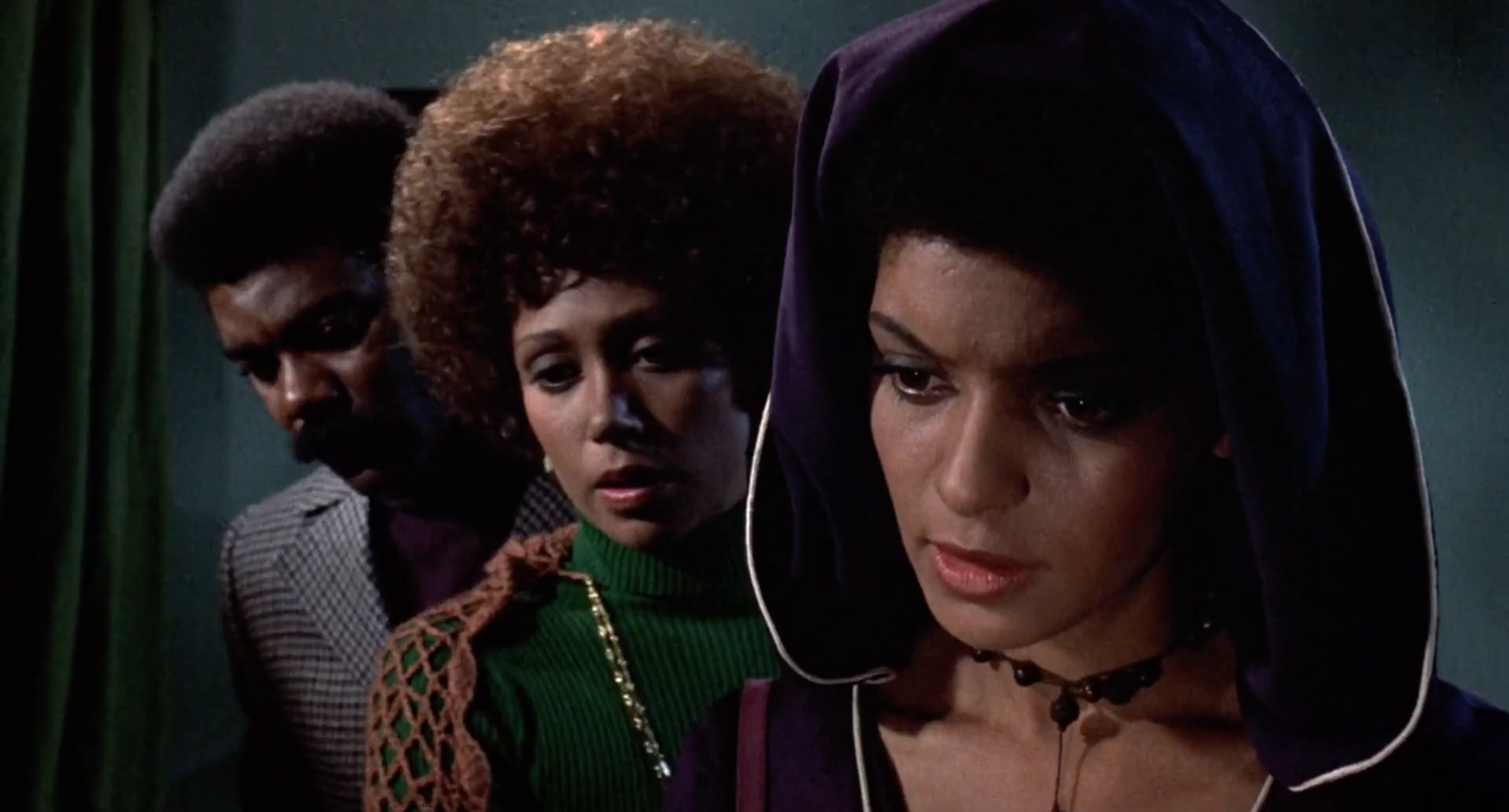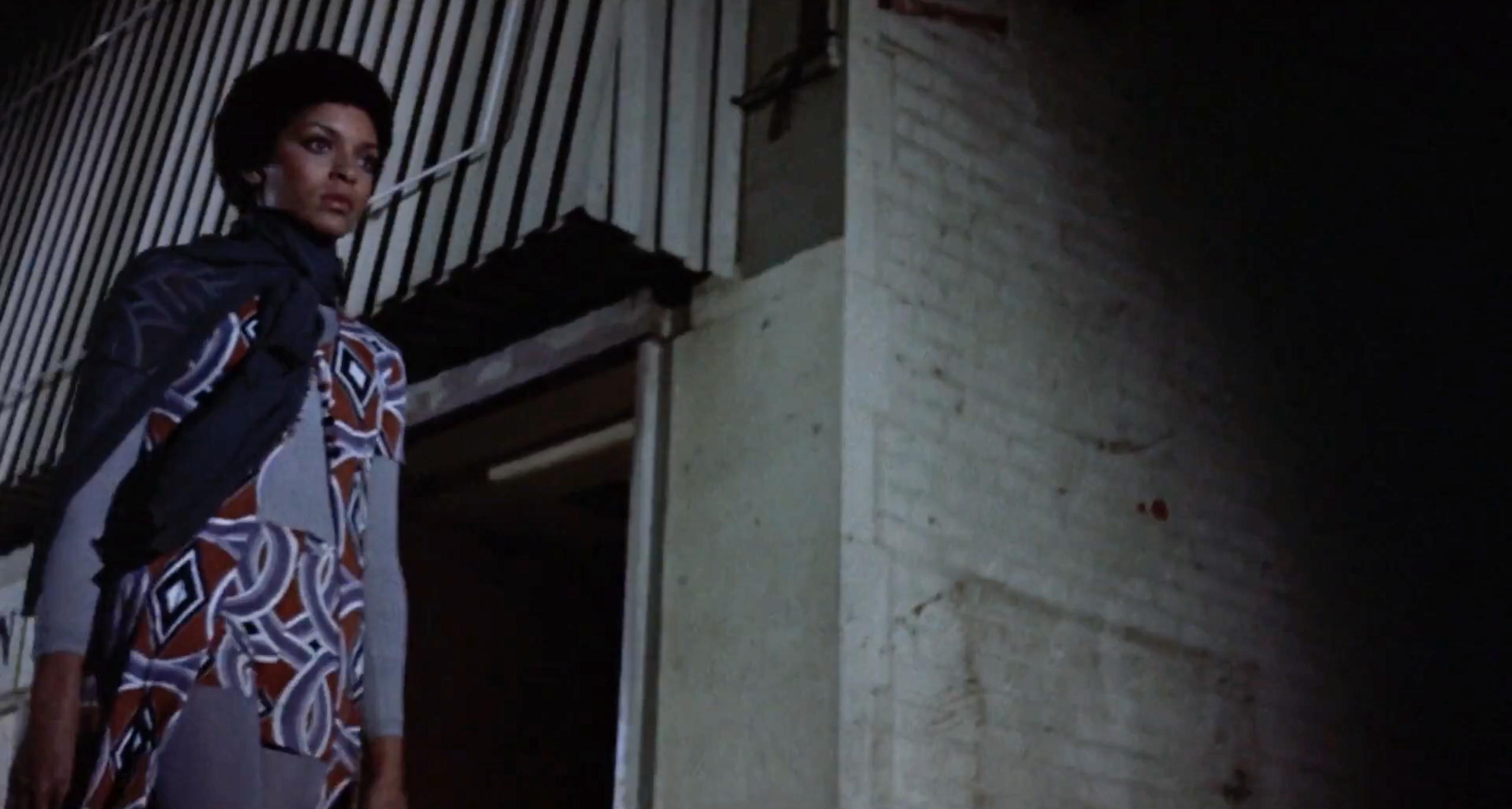There’s a lot of things going against Blacula. It’s a B movie, which means it looks fairly cheap and silly. It’s a blaxploitation movie, which a lot of people are always iffy about as it was basically white directors, writers and producers making stereotyped movies about black people. Then there’s the name: “Blacula”. It sounds like a send-up, both of Dracula and of black people, which has put off people like me from wanting to watch it.
At the same time, it should always be noted about blaxploitation that it was one of the few avenues for black actors and artists to get consistent work in the film industry. There’s a case to be made for the 70s being a better time for African American actors in leading roles than even today. Pam Grier, Tamara Dobson, Richard Roundtree, Fred Williamson and in the case of the Blacula lead, William Marshall, all enjoyed stardom in the genre. Their work, once seen as trashy and artless, has since been re-evaluated and celebrated.
The hilarious thing is, despite its title and comparatively low budget, Blacula ended up being one of the better Dracula movies I’ve ever seen. Whether or not Blacula was supposed to be a sendup, didn’t matter, because nobody apparently told the writers, director or actors, who play the story dead-straight, and wow is the film so much stronger for it.
I love vampire movies, but Dracula himself has always struggled to impress, especially in the modern day. I adore Bela Lugosi and Christopher Lee, but the movies they were actually in were terrible (There I said it. Todd Browning’s Dracula is boring and Horror Of Dracula is borderline unwatchable. Poor Christopher is barely even in Horror). Outside of Nosferatu the only adaptation I actually rate is Bram Stoker’s Dracula and even that has its problems. There are hundreds of Dracula or Dracula-adjacent films out there that I need to see, but so far, there haven’t been many that have been particularly impressive. So Blacula has managed to stand out, not just because of its silly premise but its execution also.
Much of this is thanks to William Marshall, the film’s eponymous lead, who insisted on giving the character greater dignity than the original conception, which involved a modern day everyman becoming a vampire. Marshall was a Shakespearean actor, six foot five, with a deep bass voice and an obviously commanding presence. Marshall was no everyman, he was an aristocrat.

So a new backstory was written. Instead of an everyman, Blacula was now Mamuwalde, an African Prince of the late 1700s, who travelled with his wife to Europe to protest against the slave trade. Unfortunately for the Prince and his wife, the first aristocrat they meet happens to be Count Dracula of Transylvania, who promptly vampirises Mamuwalde. Dracula, being the evil bastard he is, comes up with a particularly nasty fate for his captives, locking the prince within a coffin to forever thirst for human blood, and imprisoning his wife Luva alongside him to rot in the dungeon.
We cut to the 1970s, where Castle Dracula is now being purchased by (of all things) a gay couple, who want the antiques to sell for auction. All things “Dracula”, you see, are now the highest form of camp, which to be fair, they are, so the couple happily mince their way back to the States with Mamuwalde’s coffin in hand, unaware of its contents.
I should mention that the gay couple, and Count Dracula himself, are the lowest points of the film. On the one hand, you have Dracula, who could not be more hammy and terrible (then again, how do you say the line, “YOU SHALL BE…BLACULA!” convincingly?) And on the other hand you have the gay stereotypes, with limp wrists and flamboyant gestures in tow.
Thankfully, the film doesn’t spend too long with them as Mamuwalde, finally released from his imprisonment, feasts on the poor couple as his first meal in centuries.
Now this is when the film starts getting great. One of the gay men was a friend of the film’s leading lady, Tina (Tina, as in Mina from the Dracula novel, get it?) played by Vonetta McGee. On the way home from the funeral parlour, Tina runs into Mamuwalde, who is convinced that she is his long-dead wife Luva.
That’s right! For those of you who’ve seen Bram Stoker’s Dracula, Blacula did the reincarnated wife thing first! For those who haven’t seen it, or even read the book, I’ll explain. In the original novel, Mina is the betrothed and later wife of Jonathan Harker, the unfortunate solicitor who travels to Transylvania to assist Dracula in purchasing property in England. When Dracula arrives, he preys first on her sister Lucy, then begins feeding upon Mina as well before he is routed by Doctor Van Helsing.
Dracula has always been seductive, but before Blacula a lot of Dracula movies cheated, giving him mind control powers that allowed him to mentally overpower people. What’s cool about Mamuwalde’s relationship with Tina is that Mamuwalde actually is seductive and charismatic. On top of that you have this strange destiny story where Tina recognises him somehow, which explains why she’s so receptive to a weirdo in 18th century garb and a cape.
(Side note: All of Tina’s outfits are great, the costumers seemingly having gone for a blend between 70s fashion and the gothic).




This may well be the first cinematic depiction of Dracula as a tragic anti-hero (don’t quote me on that though, there are hundreds of Dracula films). Mamuwalde is the villain of course, he’s going around eating people, but you get the sense he’s doing it less for the joy of it and more because he has to. As a vampire he is compelled to drink human blood, but when he seduces Tina he makes it clear that he will not feed on her (and subsequently vampirise her) unless she wants it. She’s obviously frightened at the prospect of becoming undead, but as their relationship develops, she grows more receptive to the idea.
The film works so well because it’s balanced between the love story and a detective story involving Tina’s brother-in-law Dr. Gordon Thomas (Thalmus Rasulala) who’s rather concerned first at bite marks appearing on a number of murder victims, then the murder victim corpses themselves up and disappearing. You grow invested in both stories as they slowly but inevitably collide; Mamuwalde is so sympathetic, but vampirism is so obviously horrific as the body count rises, that you find yourself wondering whose side are you on?
Not everything’s perfect. Like I said, it’s a B movie and looks fairly cheap and silly sometimes, but as the film goes from strength to strength you find yourself being won over by its charm. The one thing that’s held it back all this time has been the name “Blacula”, which may have been a selling point in 1972 but sounds silly and campy today. If you can get past that (and the blatant homphobia), there’s a truly intelligent and enticing Dracula story to be enjoyed here.
